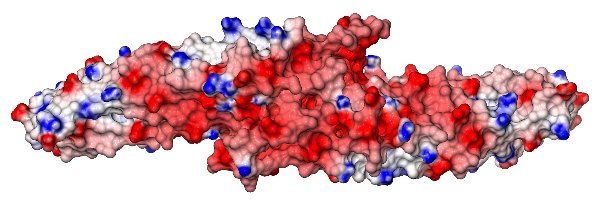Why Study BipD
 Knowledge of this protein’s atomic structure may facilitate the design of a specific drug to block it’s action, thereby stopping this bacterium from invading human cells. Terrorism is one the issues that dominates today’s news. Well imagine a bacterium that not only has the potential to be used as a bio terrorist weapon, due to its air-bourne infectivity, but also causes a disease that can kill within 48 hours. The bacteria Burkholderia pseudomallei is responsible for the disease melioidosis, endemic to Southeast Asia and Northern Australia, which can cause a whole spectrum of symptoms from septicaemia to lung disease. Coupled with the fact that it can easily infect people by being inhaled, a lot of research is now being carried out to discover not only how this bacterium causes disease, but also how it is able to infect human cells. My research focuses on a protein called BipD, which has been shown to be necessary for B. pseudomallei to infect cells. It is part of a type three secretion system that the bacterium uses like a molecular syringe to transport its virulence factors to a potential host cell and invade it. Knowledge of the atomic structure of BipD will provide information about how it functions, and give clues as to how that action can be blocked by a drug.
Knowledge of this protein’s atomic structure may facilitate the design of a specific drug to block it’s action, thereby stopping this bacterium from invading human cells. Terrorism is one the issues that dominates today’s news. Well imagine a bacterium that not only has the potential to be used as a bio terrorist weapon, due to its air-bourne infectivity, but also causes a disease that can kill within 48 hours. The bacteria Burkholderia pseudomallei is responsible for the disease melioidosis, endemic to Southeast Asia and Northern Australia, which can cause a whole spectrum of symptoms from septicaemia to lung disease. Coupled with the fact that it can easily infect people by being inhaled, a lot of research is now being carried out to discover not only how this bacterium causes disease, but also how it is able to infect human cells. My research focuses on a protein called BipD, which has been shown to be necessary for B. pseudomallei to infect cells. It is part of a type three secretion system that the bacterium uses like a molecular syringe to transport its virulence factors to a potential host cell and invade it. Knowledge of the atomic structure of BipD will provide information about how it functions, and give clues as to how that action can be blocked by a drug.
What Does BipD Do?
One of the most vital functions a bacterial cell must possess to survive and replicate is the ability to invade other cells. B. pseudomallei assembles a molecular apparatus within itself, a bit like a tiny syringe, which is used to inject two types of proteins into the host cell so that the bacterium can enter and take over the host cell. These proteins are called translocators and effectors. The translocators act on the surface of the host cell to make a pore in the cell membrane through which the effector proteins can pass. My research focuses on one of the 3 translocator proteins called BipD (Burkholderia invasion protein). If we can work out how this protein interacts with the cell membrane, and other translocators, it may then be possible to design drugs that block this process, thereby preventing infection by the bacterial cell and the manifestation of disease.

- High Resolution Structure of BipD: An Invasion Protein Associated with the Type III Secretion System of Burkholderia pseudomallei
- J Mol Biol 2006 Oct 13; 363(1): 125-36
- Erskine P.T, Knight M.J, Ruaux A, Mikolajek H, Sang N.W, Withers.J, Gill R, Wood S, Wood M, Fox G.C, Cooper J.B
- Crystallization and preliminary X-ray diffraction analysis of BipD, a virulence factor from Burkholderia pseudomallei
- Acta Cryst. 2006 Jun 27; F62: 761-764
- Knight M.J , Ruaux A, Mikolajek H, Erskine P.T, Gill R, Wood S.P, Wood M, Cooper J.B.



